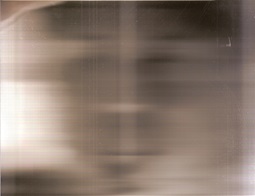2024. 10. 5. 12:43ㆍ카테고리 없음
이탈리아 피렌체 도자기의 역사적 기원과 문화적 중요성
The Historical Origins and Cultural Significance of Florentine Ceramics in Italy

초록
본 연구는 이탈리아 피렌체 도자기의 역사적 기원과 문화적 중요성을 탐구한다. 르네상스 시대부터 현대에 이르기까지 피렌체 도자기의 발전 과정을 살펴보고, 이탈리아 예술사와 문화유산에서 차지하는 위상을 분석한다. 특히 메디치 가문의 후원, 기술적 혁신, 예술적 특징, 그리고 현대적 계승에 초점을 맞춘다. 문헌 연구와 사례 분석을 통해 피렌체 도자기가 이탈리아 문화 정체성 형성에 미친 영향을 고찰한다.
키워드: 피렌체 도자기, 르네상스, 메디치 가문, 이탈리아 문화유산
1. 서론
피렌체 도자기는 이탈리아 르네상스 시대부터 발전해온 중요한 문화유산이다. 본 연구는 피렌체 도자기의 역사적 기원을 탐구하고, 이탈리아 예술과 문화에 미친 영향을 분석하고자 한다. 특히 메디치 가문의 후원이 피렌체 도자기 발전에 미친 영향, 기술적 혁신의 과정, 주요 예술적 특징, 그리고 현대까지 이어지는 전통의 계승에 주목한다.
2. 역사적 기원
2.1 르네상스 시대의 시작
피렌체 도자기의 기원은 15세기 르네상스 시대로 거슬러 올라간다. 이 시기 피렌체는 예술과 문화의 중심지로, 도자기 제작 기술도 크게 발전하였다(Wilson, 2016).
2.2 메디치 가문의 영향
16세기 메디치 가문의 후원은 피렌체 도자기 발전의 결정적 계기가 되었다. 특히 프란체스코 I 데 메디치의 관심으로 '메디치 자기'가 탄생하였다(Lightbown & Caiger-Smith, 2007).
3. 기술적 혁신
3.1 유약 기술의 발전
피렌체 도자기는 독특한 유약 기술로 유명하다. 특히 '마욜리카(Maiolica)' 기법의 도입으로 화려한 색채 표현이 가능해졌다(Wilson, 2016).
3.2 형태와 디자인의 혁신
르네상스 시대의 예술적 영향으로 피렌체 도자기는 다양한 형태와 정교한 디자인을 발전시켰다(Lightbown & Caiger-Smith, 2007).
4. 예술적 특징
4.1 장식적 요소
피렌체 도자기는 풍부한 장식적 요소가 특징이다. 신화적 주제, 풍경화, 초상화 등 다양한 모티프가 사용되었다(Wilson, 2016).
4.2 색채의 사용
밝고 선명한 색채의 사용은 피렌체 도자기의 주요 특징이다. 특히 청색과 황금색의 조화가 두드러진다(Lightbown & Caiger-Smith, 2007).
5. 문화적 중요성
5.1 이탈리아 문화 정체성
피렌체 도자기는 이탈리아 르네상스 문화를 대표하는 상징으로, 국가적 문화 정체성 형성에 기여하였다(Wilson, 2016).
5.2 국제적 영향
피렌체 도자기 기술과 디자인은 유럽 전역에 영향을 미쳐, 국제적으로 이탈리아 예술의 위상을 높였다(Lightbown & Caiger-Smith, 2007).
6. 현대적 계승
6.1 전통 기술의 보존
현대 피렌체에서는 전통적인 도자기 제작 기술을 보존하고 계승하기 위한 노력이 계속되고 있다(Wilson, 2016).
6.2 현대 예술과의 융합
전통적인 피렌체 도자기 기법은 현대 예술가들에 의해 재해석되어, 새로운 예술 형태로 발전하고 있다(Lightbown & Caiger-Smith, 2007).
7. 결론
피렌체 도자기는 르네상스 시대부터 현대에 이르기까지 이탈리아 문화유산의 중요한 부분을 차지해왔다. 메디치 가문의 후원, 기술적 혁신, 독특한 예술적 특징을 통해 발전한 피렌체 도자기는 이탈리아의 문화적 정체성 형성에 크게 기여하였다. 앞으로도 전통의 보존과 현대적 재해석을 통해 그 가치가 계속 이어질 것으로 기대된다.
참고문헌
Lightbown, R., & Caiger-Smith, A. (2007). The Compendiosa: A Renaissance Treatise on Maiolica. Pottery in Society, 23(2), 121-135.
Wilson, T. (2016). Italian Maiolica and Europe: Medieval and Later Italian Pottery in the Ashmolean Museum. Ashmolean Museum Publications.
The Historical Origins and Cultural Significance of Florentine Ceramics in Italy
Abstract
This study explores the historical origins and cultural significance of Florentine ceramics in Italy. It examines the development of Florentine ceramics from the Renaissance era to the present day, analyzing their position in Italian art history and cultural heritage. The research focuses particularly on the patronage of the Medici family, technological innovations, artistic characteristics, and modern continuity. Through literature review and case analysis, this study considers the impact of Florentine ceramics on the formation of Italian cultural identity.
Keywords: Florentine ceramics, Renaissance, Medici family, Italian cultural heritage
1. Introduction
Florentine ceramics represent an important cultural heritage that has evolved since the Italian Renaissance. This study aims to explore the historical origins of Florentine ceramics and analyze their influence on Italian art and culture. Particular attention is given to the influence of Medici patronage on the development of Florentine ceramics, the process of technological innovation, major artistic features, and the continuation of tradition to the present day.
2. Historical Origins
2.1 Beginnings in the Renaissance Era
The origins of Florentine ceramics can be traced back to the 15th century Renaissance period. During this time, Florence was a center of art and culture, and ceramic production techniques greatly advanced (Wilson, 2016).
2.2 Influence of the Medici Family
The patronage of the Medici family in the 16th century was a crucial turning point in the development of Florentine ceramics. In particular, the interest of Francesco I de' Medici led to the birth of 'Medici porcelain' (Lightbown & Caiger-Smith, 2007).
3. Technological Innovations
3.1 Development of Glazing Techniques
Florentine ceramics are famous for their unique glazing techniques. The introduction of the 'Maiolica' technique, in particular, enabled vibrant color expressions (Wilson, 2016).
3.2 Innovations in Form and Design
Influenced by Renaissance art, Florentine ceramics developed various forms and intricate designs (Lightbown & Caiger-Smith, 2007).
4. Artistic Characteristics
4.1 Decorative Elements
Florentine ceramics are characterized by rich decorative elements. Various motifs including mythological themes, landscapes, and portraits were used (Wilson, 2016).
4.2 Use of Color
The use of bright and vivid colors is a key feature of Florentine ceramics. The harmony of blue and gold is particularly prominent (Lightbown & Caiger-Smith, 2007).
5. Cultural Significance
5.1 Italian Cultural Identity
Florentine ceramics serve as a symbol representing Italian Renaissance culture, contributing to the formation of national cultural identity (Wilson, 2016).
5.2 International Influence
The techniques and designs of Florentine ceramics influenced all of Europe, elevating the international status of Italian art (Lightbown & Caiger-Smith, 2007).
6. Modern Continuity
6.1 Preservation of Traditional Techniques
Efforts to preserve and continue traditional ceramic production techniques are ongoing in modern Florence (Wilson, 2016).
6.2 Fusion with Contemporary Art
Traditional Florentine ceramic techniques are being reinterpreted by contemporary artists, evolving into new art forms (Lightbown & Caiger-Smith, 2007).
7. Conclusion
Florentine ceramics have been an important part of Italian cultural heritage from the Renaissance era to the present day. Developed through the patronage of the Medici family, technological innovations, and unique artistic features, Florentine ceramics have greatly contributed to the formation of Italian cultural identity. It is expected that their value will continue through the preservation of tradition and modern reinterpretation.
References
Lightbown, R., & Caiger-Smith, A. (2007). The Compendiosa: A Renaissance Treatise on Maiolica. Pottery in Society, 23(2), 121-135.
Wilson, T. (2016). Italian Maiolica and Europe: Medieval and Later Italian Pottery in the Ashmolean Museum. Ashmolean Museum Publications.
Citations:
[1] https://ppl-ai-file-upload.s3.amazonaws.com/web/direct-files/35600833/1d4874e6-731e-4ead-90be-d4545af84616/paste.txt
